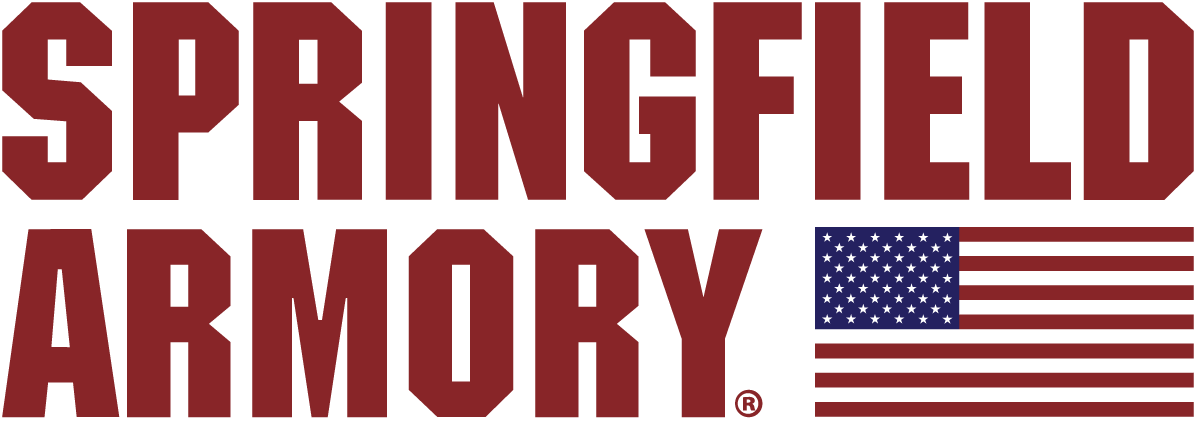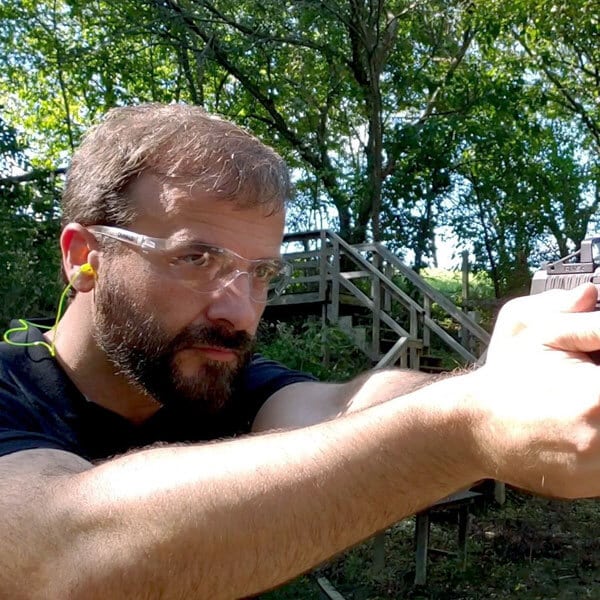A .308 1911?
The Springfield S.A.S.S. Pistol
March 24th, 2022
8 minute read
“Dad was constantly working on some project. It seemed like he was always tinkering on something that nobody else had thought of doing,” explained Dennis Reese, CEO and owner of Springfield Armory. I had just sat down with him and his brother Dave Reese to discuss one of the more unique and radical guns from the company’s past — the 1911-A2 S.A.S.S.
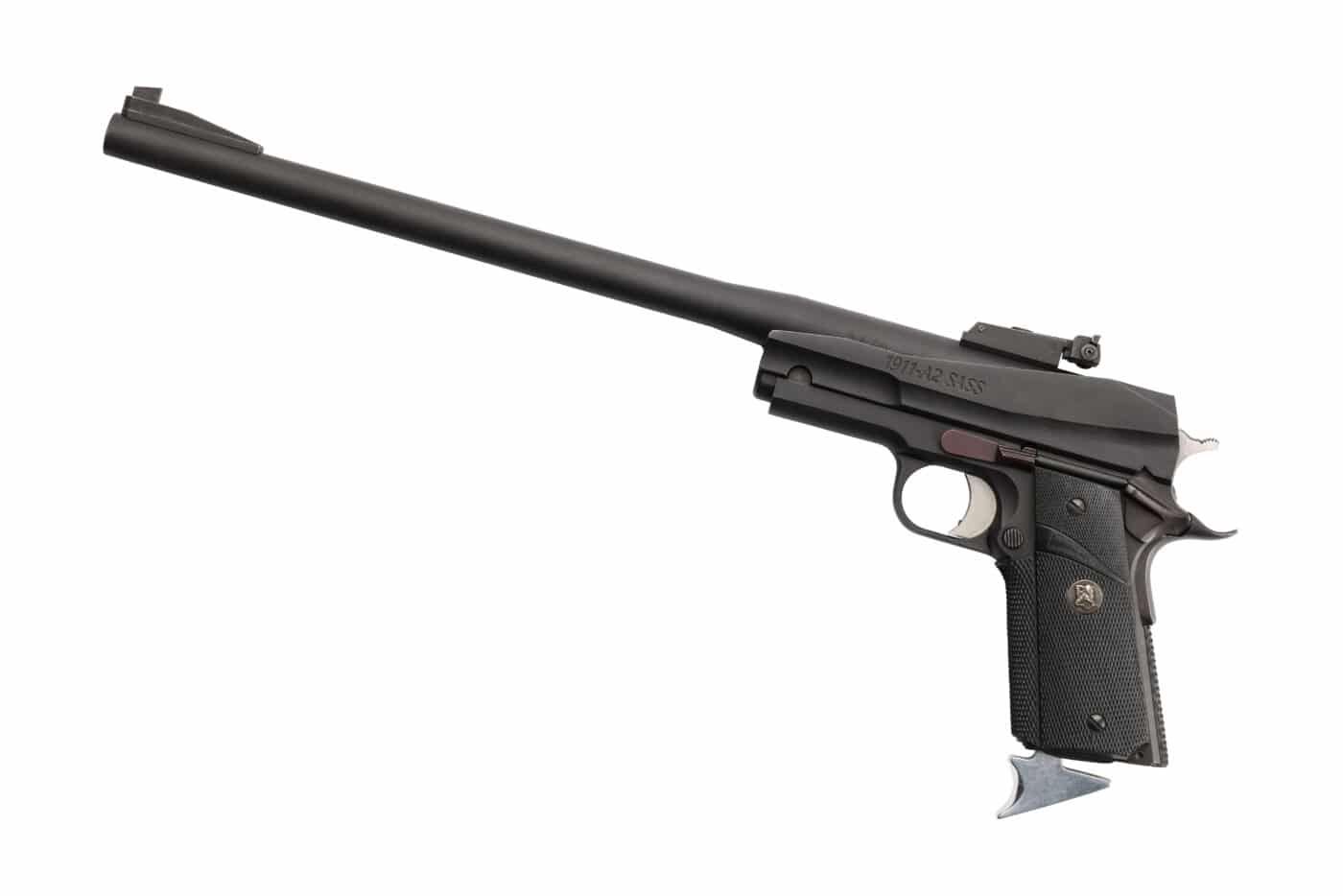
“This was his brainchild,” chimed in Dave Reese. “He was always working on guns, adding on parts, modifying them, trying to get the most out of them. He worked on this one for several years.”
That pistol was one that I remember from my younger years, when I would thumb through the Springfield Armory catalog I had picked up at the local gun store. Sandwiched there, between pages filled with M1A’s, BM-59’s, 1911’s and more, was this utterly strange-looking, long-barreled, single-shot pistol — chambered in a range of cartridges all the way up to .308 Win.! So, when I came across one recently, I just had to find out the whole story behind it.
This was what led to this interview with the two Reeses, and their telling me about the background of the pistol and the man who developed it — their father, the late Bob Reese.
The S.A.S.S. Foundation
“I remember Dad talking about what would become the S.A.S.S. you have there,” continued Dave Reese. “He envisioned it being like something from a spy movie. You take the components out of the case, slowly assemble the gun and you are ready to go.”
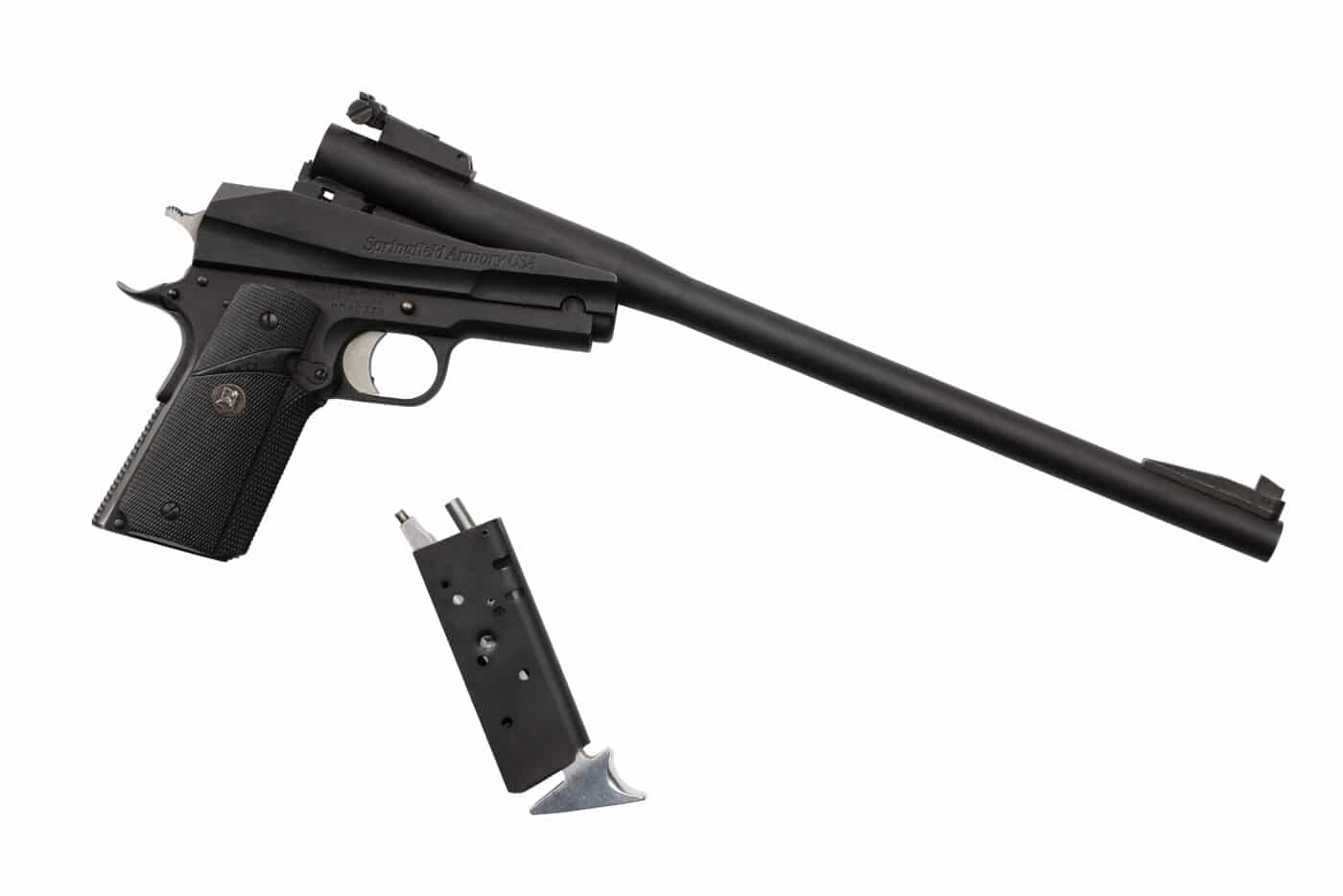
“In the real world, he was basically trying to make a more affordable alternative to the T/C Contender single-shot pistol,” explained Dennis Reese.
But, that alternative to the T/C was done in a uniquely Springfield Armory way. Rather than developing an expensive proprietary frame assembly for multiple barrels, Bob Reese decided to create a conversion system based on the proven 1911 pistol.
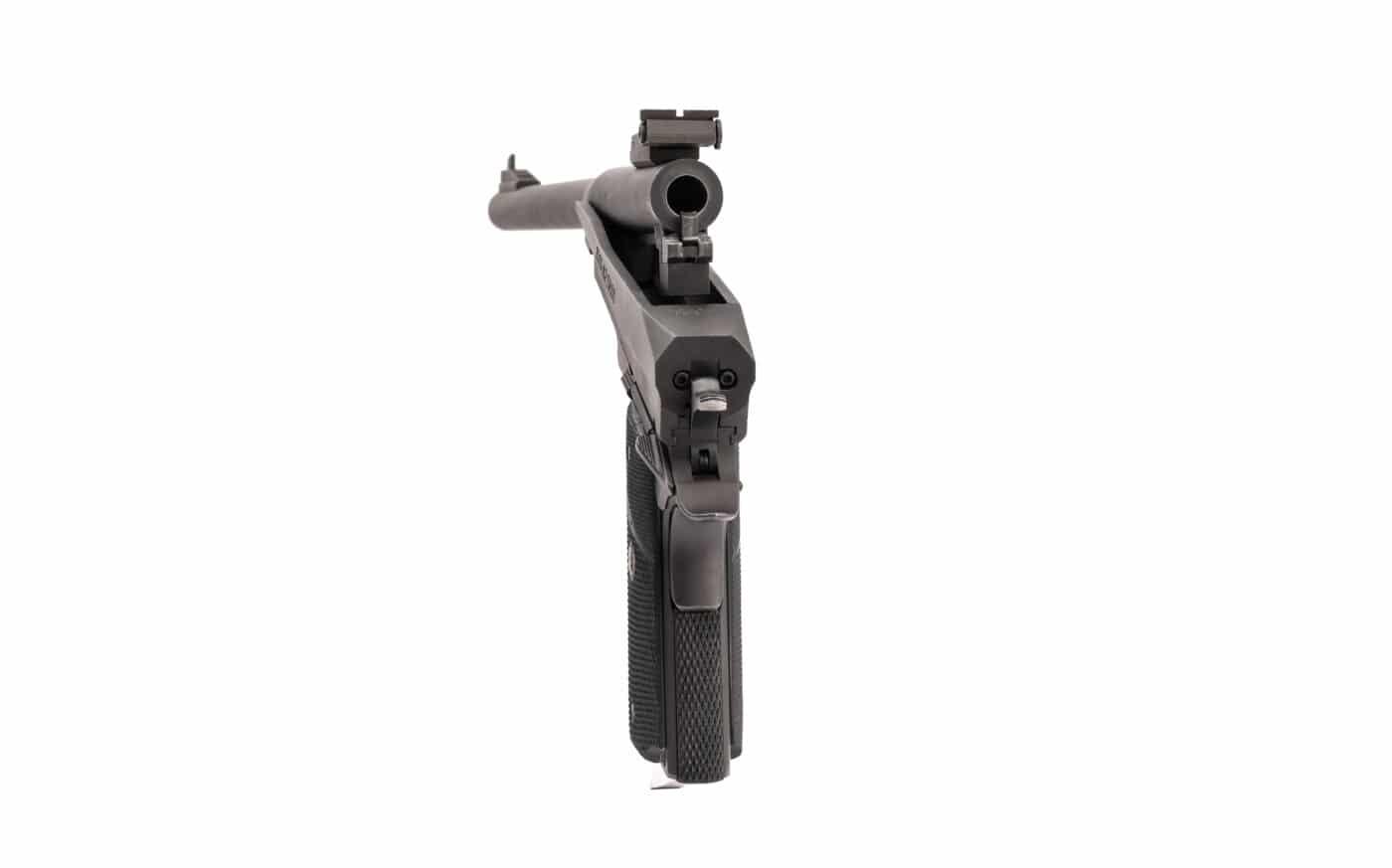
“He approached this concept with the mindset of how to make this as affordable as possible, by adapting it to the 1911 — a pistol that many people owned,” continued Dennis Reese. He went on to explain that his father felt it made a lot of sense to use the 1911 as a foundation. Not only was it a gun millions of shooters owned, but it would also let them have the same grip, trigger, controls, etc., with which they were familiar.
As the conversation continued, I learned that Bob Reese insisted the design be totally tool-free. This would be something that you could fit to your 1911 frame in less than a minute, and then switch back to a standard 1911 configuration just as quickly and easily.
The .308 1911: From Vision to Reality
When the S.A.S.S. — which stands for “Springfield Armory Single-Shot” — appeared in the late 1980s, it was a truly revolutionary offering. Offered as a complete pistol and later as a conversion kit, and with barrels available in a range of chamberings, the S.A.S.S. offered 1911 fans a radical adaptation of the design.
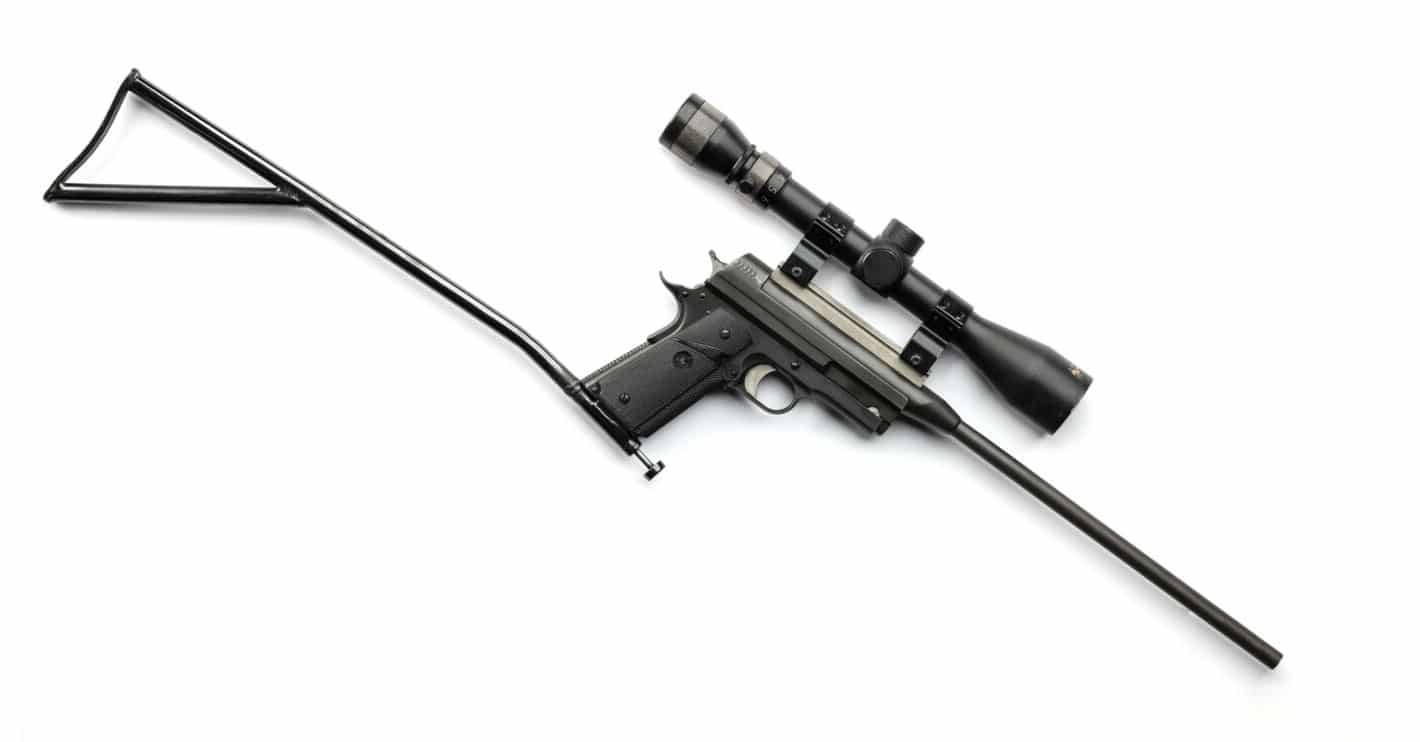
The S.A.S.S. was offered in two different barrel lengths — 10¾” or 14.9″. Both lengths were offered in .22 LR and 7mm BR. The longer barrel length was offered in .223, .243, 7mm-08, .308 and .358 Win. The shorter barrel length offered the additional chambering options of .357 Mag. and .44 Mag. Yes, you read correctly that this gun chambered .308 and .358 Win.
The fact that this gun could handle the power of .308 Win.-based cartridges speaks to the engineering behind the design. “Dad was tinkering on these himself from the very start. He would do a ton of gunsmithing, fitting and testing, working hand-in-hand with the Springfield Armory engineers,” explained Dennis Reese.
“Safety was a paramount concern,” he continued. Both he and Dave explained that their father worked closely with Bob Kuehl, a Springfield Armory engineer, to push the design to ensure its strength. “They pushed and pushed the system to overload to try to get it to fail,” Dennis Reese told me.
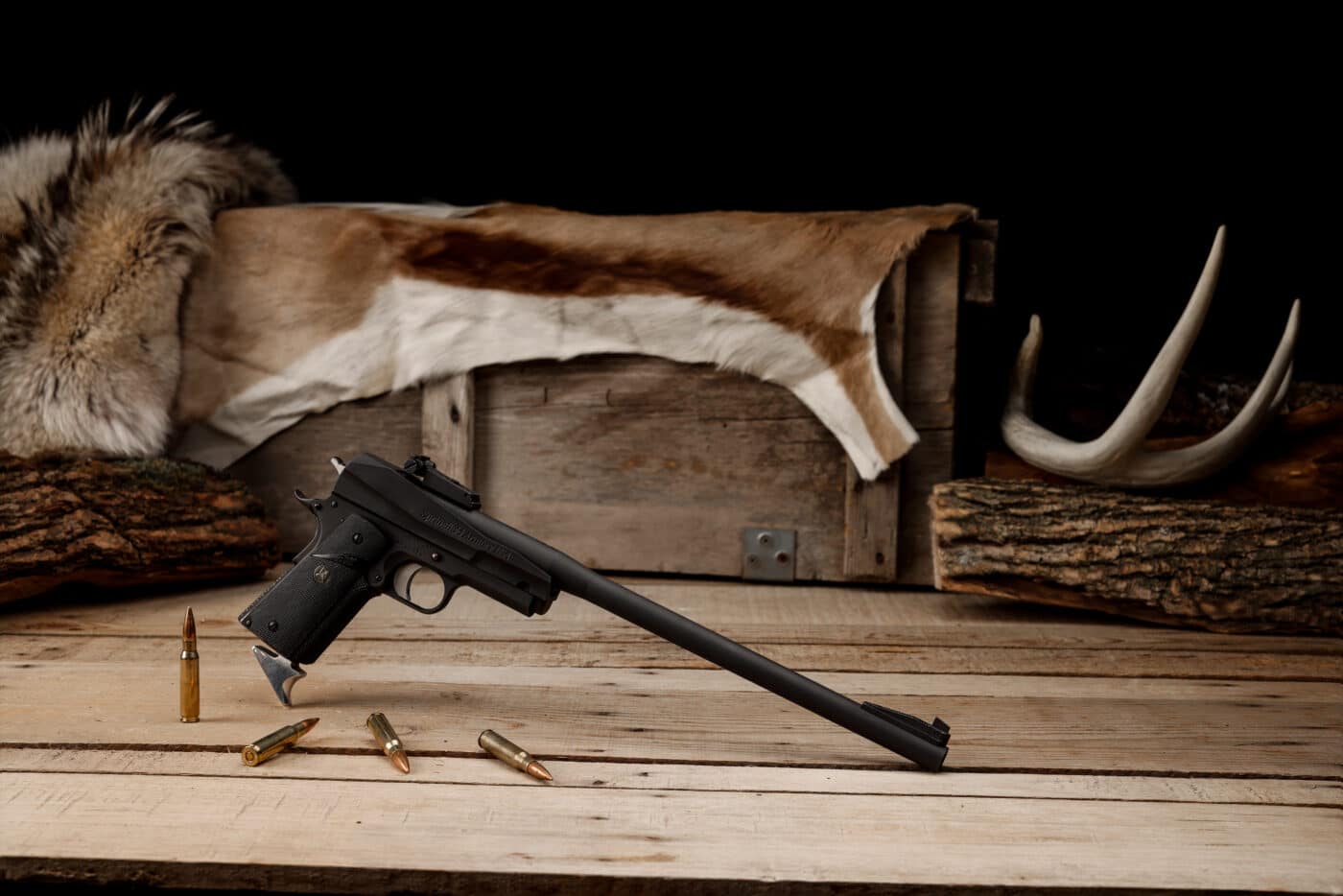
He pointed out the large sidewall areas around the chamber area of the barrel on the S.A.S.S. and explained, “Earlier versions had less material here, but as they refined the design, they added material here to add as much strength as possible. When you’re firing rounds like a .308 in a pistol, you want to make sure it’s strong and safe. They tested it extensively with overpressure loads, and it held together. They were happy with how far they were able to push it.”
The two Reeses told me their father was constantly tweaking and modifying it, even developing a .22 LR carbine prototype, among other projects. When I asked them why he wanted to develop a pistol that could fire as large and powerful a cartridge as the .308, Dennis Reese responded, “He was a big fan of that cartridge. Our M1A was chambered for it, and it was a modern-day version of the classic .30-06 round.” The adaptation of the design to that round also opened up the pistol to other .308-based cartridges like the .243, the 7mm-08 and the .358 Win.
The Nuts and Bolts
Just as Bob Reese had envisioned, the 1911-A2 S.A.S.S. employs a truly tool-free conversion system for the 1911. If you were converting your 1911 to use the system, you would simply clear the pistol and then remove the magazine and the slide assembly. Insert the assembly as you would a slide assembly, and then install the slide stop. The slide stop pin passes through the assembly, locking it into the frame.
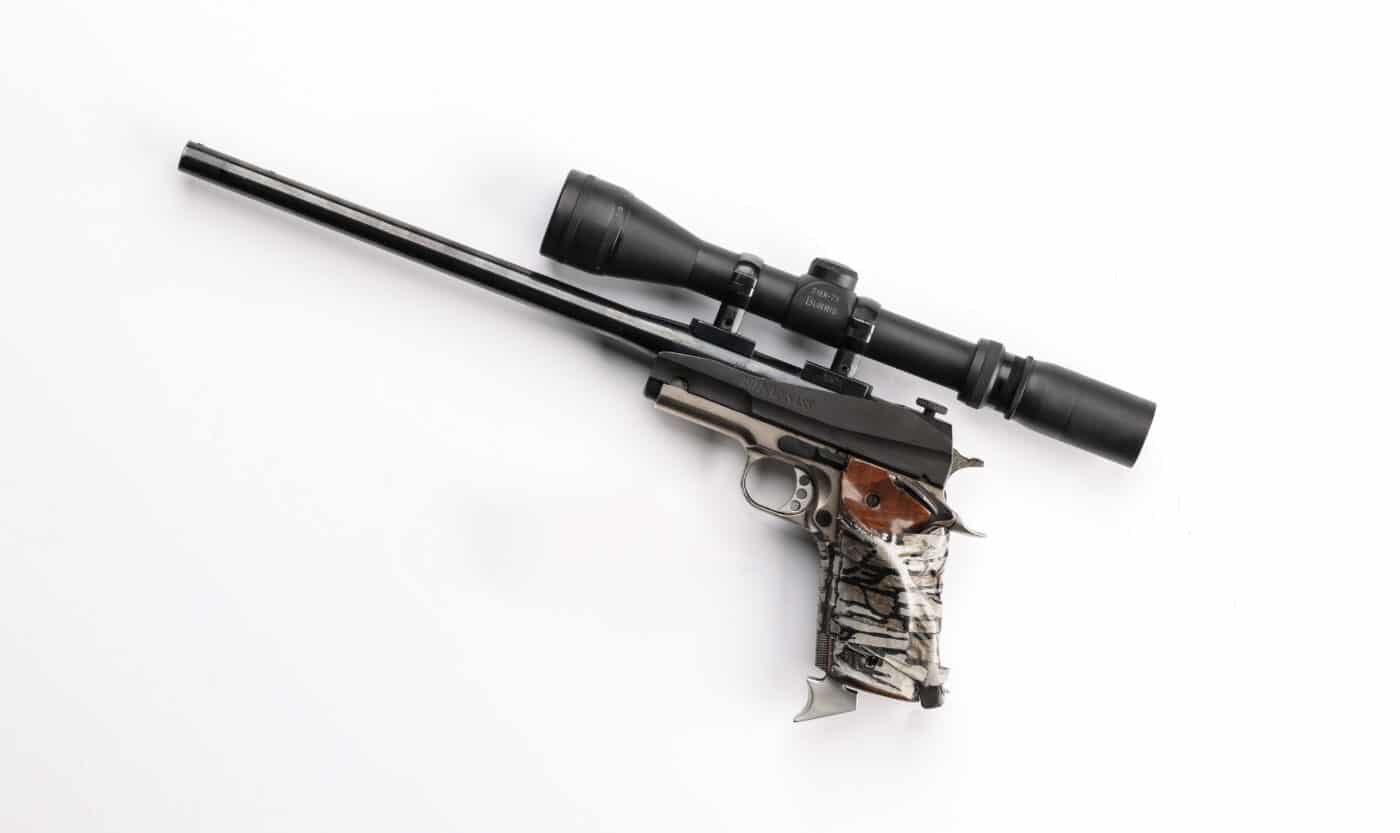
The system employs a hinge barrel/break-open system, with the hinge system located at the forward portion of the assembly. When I first inspected the S.A.S.S., I was curious as to how the rear of the barrel locked closed. Remember I mentioned taking out the original magazine?
Bob Reese’s ingenious solution was to integrate a locking interface into a replacement magazine insert assembly. This magazine insert integrates a locking interface that projects up and out of a shortened 1911 magazine body, with a release lever integrated into a replacement floorplate/finger extension. Pulling back on the finger extension unlocks the rear barrel lug, allowing you to open the action to insert a round or remove a fired case.
“That magazine insert features a spring-loaded tensioner that was one of Dad’s first patents,” explained Dennis Reese.
To swap barrels, you would separate the entire upper assembly from the frame. With the barrel open/unlatched, you would then push the pivot pin out. This would free the barrel from the upper assembly and allow you to switch it out for another one.
A .308 Pistol in the Field
While the S.A.S.S. became part of the Springfield Armory line, Bob Reese continued to tinker with it, developing variants for his own uses and interests. “Dad was an avid hunter, and the S.A.S.S. — in one form or another — went with him and our mother, Carol, on many trips,” Dennis Reese mentioned.

He went on to tell me that his father had taken caribou, moose, elk, just about any North American game. “He even would take it on safaris and the guides would be amazed by it. They had never seen anything like the S.A.S.S.”
Dave Reese added, “He actually took a Cape buffalo on a safari with a prototype model in .358 Win. with a shoulder stock on it. If I remember correctly, he had a Pachmayr shotgun-style recoil pad fitted to it.”
I learned that Dave and Dennis’ mother, Carol Reese, was on that very safari in which Bob Reese took the Cape buffalo. I was able to reach out to her and find out a little bit more about the trip.
“We were on a trip to Zimbabwe and South Africa, hunting plains game with that S.A.S.S., and we decided we were going to go after a Cape buffalo with it. The guides and trackers couldn’t believe it!”, she told me.
“Bob was that determined, and had that much faith in it,” she continued. “I had a rifle and was backing him up, along with the guide. We tracked him down, and Bob took him with it. I was thrilled I could be there with him when he did that.”
Springfield SASS Owners Manual
I did a little digging around the Springfield Armory archives to see what I could find. Sure enough, I found an original 1911-A2 S.A.S.S. Owner’s Manual. Here’s what it looked like:
Springfield Armory 1911-A2 S.A.S.S. Owner’s Manual
The manual detailed how to install the conversion unit, how to load the gun, how to uncock the pistol safely, and more. The manual also included a full parts list and schematic, which is shown below.
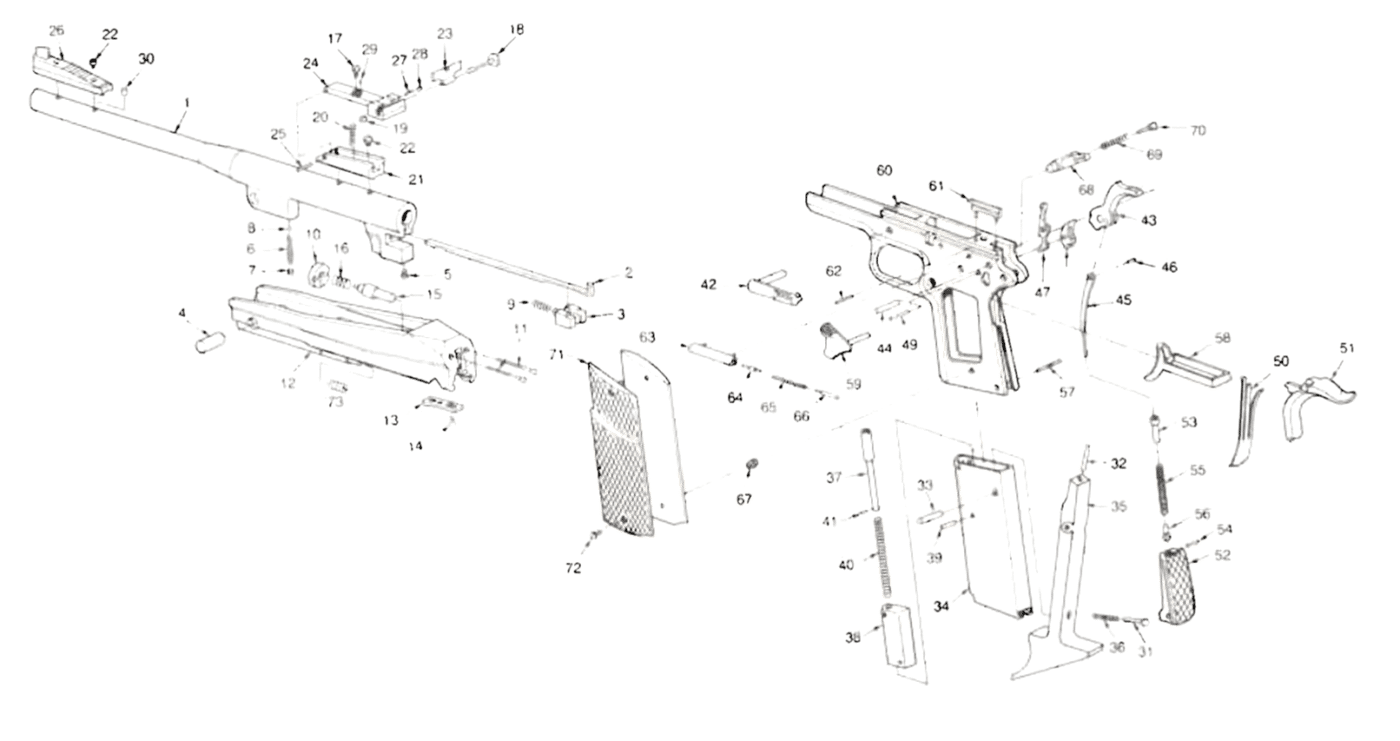
Specifications
Here are the specs on the original 1911-A2 S.A.S.S.:
Caliber & Barrel Length
- .22 LR: 10.7″ or 14.9″
- .223 Rem: 14.9″
- .243 Win: 14.9″
- 7mm BR: 10.7″ or 14.9″
- 7mm-08: 14.9″
- .308 Win: 14.9″
- .357 Magnum: 10.7″
- .358 Win: 14.9″
- .44 Magnum: 10.7″
Overall Length
- 13.0″ with the 10.7″ barrel
- 17.2″ with the 14.9″ barrel
Weight
- ~61 oz. with 10.7″ barrel
- ~66 oz. with 14.9″ barrel
Springfield Armory noted that exact weights varied slightly depending on the barrel’s bore diameter.
Final Thoughts
While I’d love to be able to snap my fingers and own all the guns in those old Springfield Armory catalogs from the 1980s and early 90s, just having the chance to handle and inspect one of these S.A.S.S. pistols was a treat for me. I have always been intrigued by unique and innovative designs, and the S.A.S.S. certainly qualifies on that front.
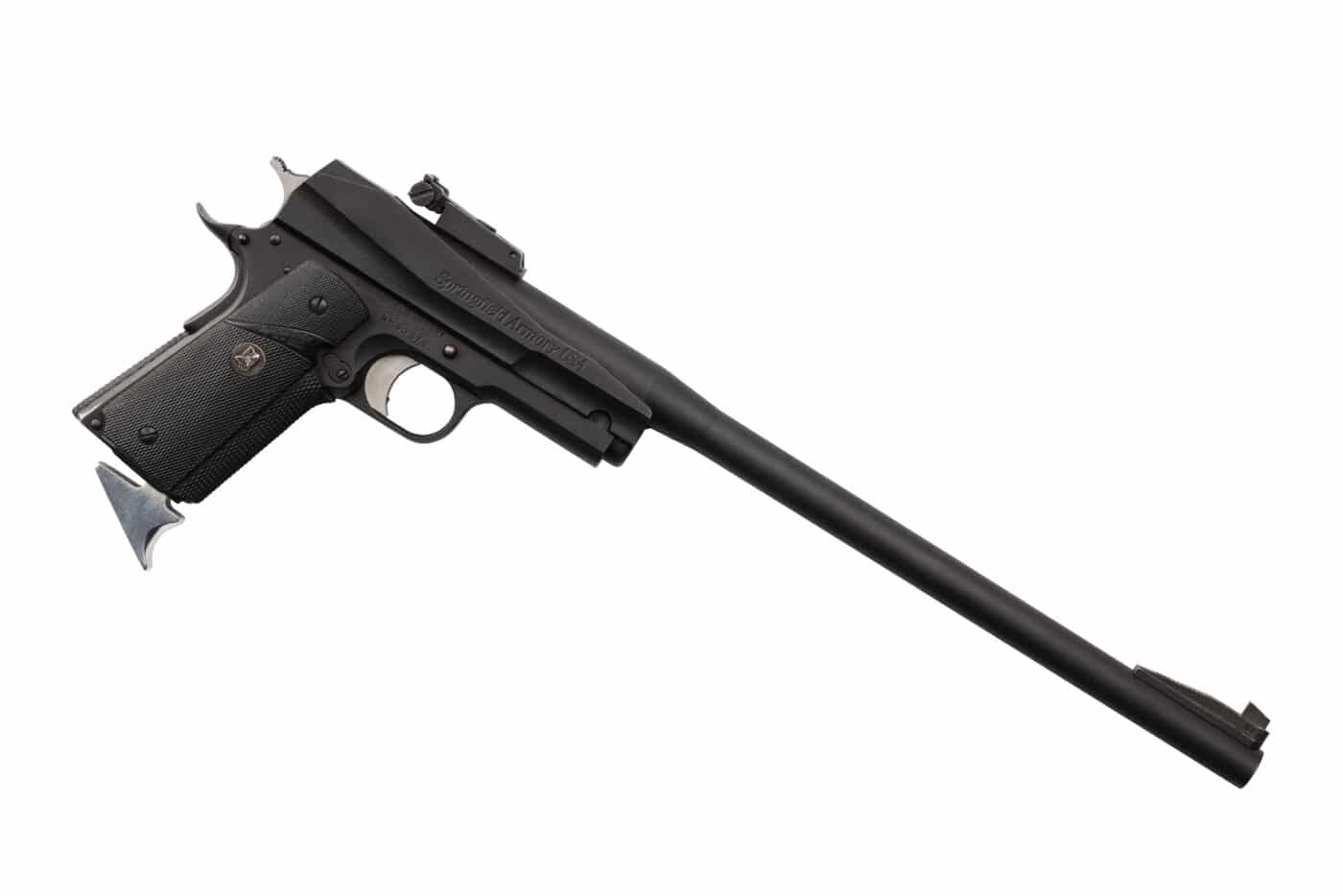
Getting to physically handle one was a wonderful opportunity — being able to find out the story behind its development made the experience even better.
Geneseo, Illinois’ Springfield Armory, since its inception nearly half a century ago, has always stayed on the cutting-edge when it comes to firearms design. The tradition of innovation and quality established by Bob Reese in the early days of the company carries on through today in Springfield Armory’s latest offerings such as the Hellcat, the Hellion bullpup, the SA-35, the SAINT Edge ATC, and many more. And while no longer available, the radical spirit of the 1911-A2 S.A.S.S. lives on there today. Who knows what we might see next?
Editor’s Note: Please be sure to check out The Armory Life Forum, where you can comment about our daily articles, as well as just talk guns and gear. Click the “Go To Forum Thread” link below to jump in!
Join the Discussion
Featured in this article
Continue Reading
Did you enjoy this article?

 286
286




